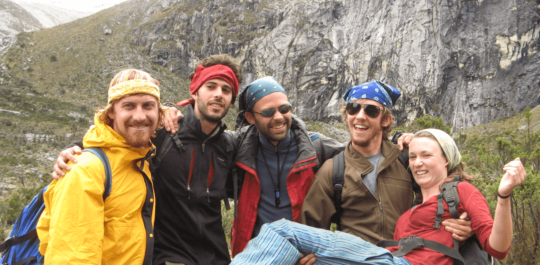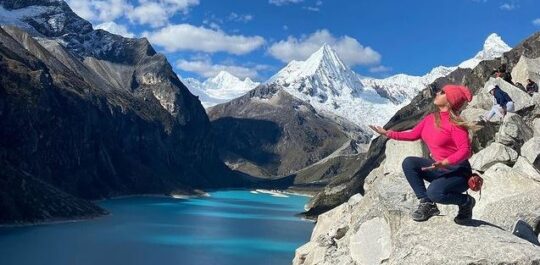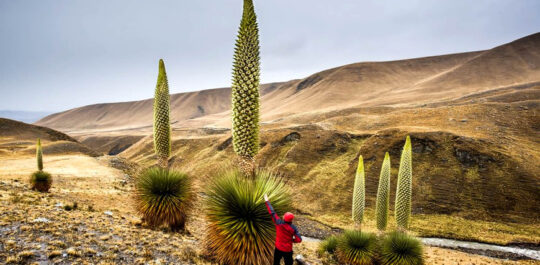The city of Huaraz is home to many attractions that are wonderful. A combination of history and nature, Huaraz is a paradise for outdoor enthusiasts in Peru because it offers a multitude of hiking possibilities.
If you are a trekking and nature lover, you can’t miss this little gem in the Andes of northern Peru. Find our customized tours and tour packages with a variety of options and prices to suit your needs.
Visit Laguna 69, Nevado de Pastoruri – Puya Raimondi, Laguna Parón, Chavin de Huantar and much more.
Best Excursions and Guided Tours Huaraz
Frequently asked questions from our customers
Where is the city of Huaraz?
It is a Peruvian city, capital of the Ancash department, and the most populous city in the department. Situated on the banks of the Santa River, it is situated in the valley of the Callejón de Huaylas in northern Peru.
It is guarded by the huge snow-capped Huascarán and has a privileged geography with landscapes that include snow-capped mountains, lagoons, archaeological sites, Huaraz comes from the Quechua “WARAQ”, which in Spanish means “Lucero”.
The city is an important arrival point for adventure and high mountain sports enthusiasts in the Cordillera Blanca and the Cordillera Huayhuash.
MAP
Altitude:
3.052 meters
Climate
The climate of Huaraz is considered a temperate tropical mountain climate, characterized by sunny days and cold nights. The highest temperatures in Huaraz occur in August when it reaches 24 °C and the lowest in the month of July with 4 °C. Huaraz has a rainy season and a dry season.
Airport
Comandante FAP Germán Arias Graziani Airport
Best times to visit Huaraz
The best time to travel to the city of Huaraz is between May and September. This is when you can be sure that most days are clear.
Huaraz is known as the most famous for trekking and hiking in Peru, so for treks of 1 or more days, less rain is essential.
The capital of Ancash, considered as “the Peruvian Switzerland”, is named after its location around the snow-capped mountains of the Cordillera Blanca.
Most visited places in Huaraz
Lagoon 69.
It is located in the Huascaran National Park, which is north of Lima. The hike to Lagoon 69 is an unforgettable experience in which you can observe gigantic landscapes decorated with waterfalls, rivers, vegetation and the snow-capped mountain peaks that belong to the Cordillera Blanca of Peru. To get there you have to walk for about 3 hours.
Campo Santo de Yungay
Campo Santo de Yungay was once one of the most beautiful towns in Peru, to which one of the most remembered tragedies in Peru’s history happened.
In 1970, an earthquake not only destroyed everything around it, but also caused a great flood that buried the town and its 10,000 inhabitants, today it is possible to visit this place and learn more about its history. You can also observe the gigantic rocks left by the alluvium.
Nevado Pastoruri
Visiting the base of Nevado Pastoruri is an experience not to be missed, where you can see one of the fastest receding glaciers in Peru, as well as incredible landscapes around the imposing mountain and the gigantic chunks of ice resting in the glacier’s lagoon.
Churupa Lagoon
Churup Lagoon is located a few kilometres from Huaraz, in the Ancash region. It is the most easily accessible lagoon from Huaraz, it has hues ranging from deep blue to emerald, a range of colours protected by the mountains that can be seen around it.
It is situated at over 4,000 metres above sea level, from the lagoon you can also see the incredible snow-capped mountains of the Cordillera Blanca and Cordillera Negra.
Parón Lake
This is considered the largest lake in Cordillera Blanca. Lake Parón offers impressive views of different snow-capped mountains such as Artesonraju, Piramide, Huandoy Norte, Chacraraju, Paria and Pisco.
You can get to know it by visiting its viewpoint, or you can take a walk of approximately 3:30 hours along the shores while you can observe the waterfall and its vegetation.
Chavín de Huantar
This is an archaeological site in Peru. It was the centre of the chavin culture, it was built by the chavin culture more than 2200 years ago.
Being the most important of the Ancash depsrtament, this great architectural work had two temples, of which some of its parts are still preserved with two temples, the chavin culture is considered one of the oldest known in South America. In which you will find a mysterious network of labyrinths.
Llanganuco Lagoon
This is located 25 km north of Yungay. The lagoon is located within the Huascaran National Park, it springs from the snow-capped peaks of Huascaran, Huadoy, Pisco, Yanapaccha and Chopicalqui.
The real name of the lagoon is Chinaconcha (female lagoon in Quechua), and it is separated from the next lagoon called Orconcocha (male lagoon in Quechua). At the lagoon you can take good photographs while acclimatising to the altitude of the Andes.













